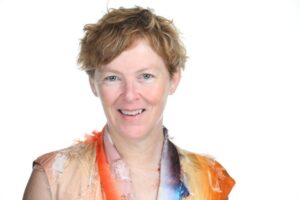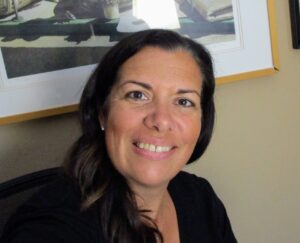
The uniqueness of a mentorship relationship is the growth and trust between two individuals. The mentor who supports and guides, and the mentee who follows and applies that knowledge. Although the CSE mentorship program is designed to last 1 year, some pairs continue their relationship indefinitely. Such has been the case for mentor Heather Goodell and mentee Lindsey Hoover.
CSE launched the mentorship program in 2017. Any member interested in science editing or any related field can apply. Prospective mentees are then matched with veteran mentors who fit the desired expertise.
Mentor Heather Goodell started working at the American Heart Association (AHA) in 2002 and is currently the senior vice president of publishing. She specializes in the business aspect of publishing, overseeing 14 journals. Together, these journals, which include some ranking at the top of science publications, receive over 26,000 submissions yearly. As a long-time member of CSE, she joined the mentorship program to share her knowledge and experience. Through the program, she was matched with Lindsey Hoover.
At the time, Lindsey, who had worked for the American Academy of Family Physicians (AAFP) since 2008, was focused on editing medical manuscripts and materials. When she heard about the program CSE was launching, she immediately went online and signed up as a mentee. Through the program, she wanted to learn about the business aspects of publishing for medical organizations.
The mentorship committee matched Heather and Lindsey, and in August 2019, they met for the first time. Their supposedly short relationship would become a long, ongoing journey together. “When I first found out that Heather Goodell was my paired mentor, I was both shocked and intimidated,” Lindsey confessed. She had researched her mentor’s background before their first meeting and found how active Heather is in her work. Heather was also CSE president from 2013 to 2014. Excited, Lindsey knew she would learn a lot from her newfound mentor.
The mentorship program calls their mentor–mentee pairs dyads. The dyads are provided with a 3-month basic training guideline and are recommended to meet once a month. At first, Heather and Lindsey’s relationship was strictly professional. They sent formal emails to each other and followed the guidelines. Heather answered questions that Lindsey would send her 2 days before their designated meeting time. Topics included updates to the CSE style manual and newly published articles she was interested in discussing. Most of their interactions were online through Zoom. Sometimes, they joined group sessions with other dyads to learn new skills in science editing, all while strengthening their relationship.
Slowly and surely, the two warmed up to one another. Being in the same industry, they found common ground to engage in lengthy discussions and share ideas. “Along the way, we somehow exchanged phone numbers and our conversation started to get longer,” Heather said. Their email exchanges turned into monthly phone calls and then into multiple text messages throughout the month.
Talking with her mentor has given Lindsey a sense of security and certainty when making her own executive decisions and sharing ideas or input at work. Due to their relationship as mentor and mentee, she found it enjoyable to learn from Heather. “Our discussions would spark my curiosity and confidence,” Lindsey stated. “It was possible for me to learn and be engaged in the topic.”
The mentorship program can teach not only the mentee but also the mentor. In another context, Heather had experience as a mentee herself and wanted to be a good role model for Lindsey. Becoming her mentor taught her that she too can learn from the exchange. “I think it’s really important to set the example,” Heather said. “It’s a great way for me to teach someone else what I’ve been through and in turn learn what they’re going through.”
About halfway through Heather and Lindsey’s mentorship, COVID-19 hit, creating some challenges for the dyad. Work was moved online, policies in their fields were updated or changed, and their mental state was tested during the lockdown. “It [the mentorship] really became a support system and guidance,” Lindsey states. “This ended up helping with my mental health. Having an outside person that I could run things by.” The two exchanged ideas and provided support on many topics and events, both inside and outside work. Toward the end of their mentorship year, the dyad grew closer. They still ask what is new or what they are doing at work. When challenges present themselves, they encourage and lean on each other. “It was supposed to be a 12-month commitment, and we just never stopped,” Lindsey said.
Lindsey now works as a compliance strategist at the AAFP, serving as a subject matter expert to secure and strengthen compliance with current guidelines governing accredited CME, as well as meet the standards for other certifying bodies. She is thankful to both the mentorship program and Heather for the guidance she has received. As for Heather, she continues her role as a senior vice president of the AHA while maintaining her membership in CSE and serving on the mentorship committee. Heather and Lindsey keep up with each other not only as mentor and mentee, but as friends. Besides work discussions, they are actively involved in each other’s personal lives—bonding over their love for their French bulldogs and hoping to attend a Taylor Swift concert together.
Lalain D Aquino is a graduate student in science and technology journalism at Texas A&M University.

